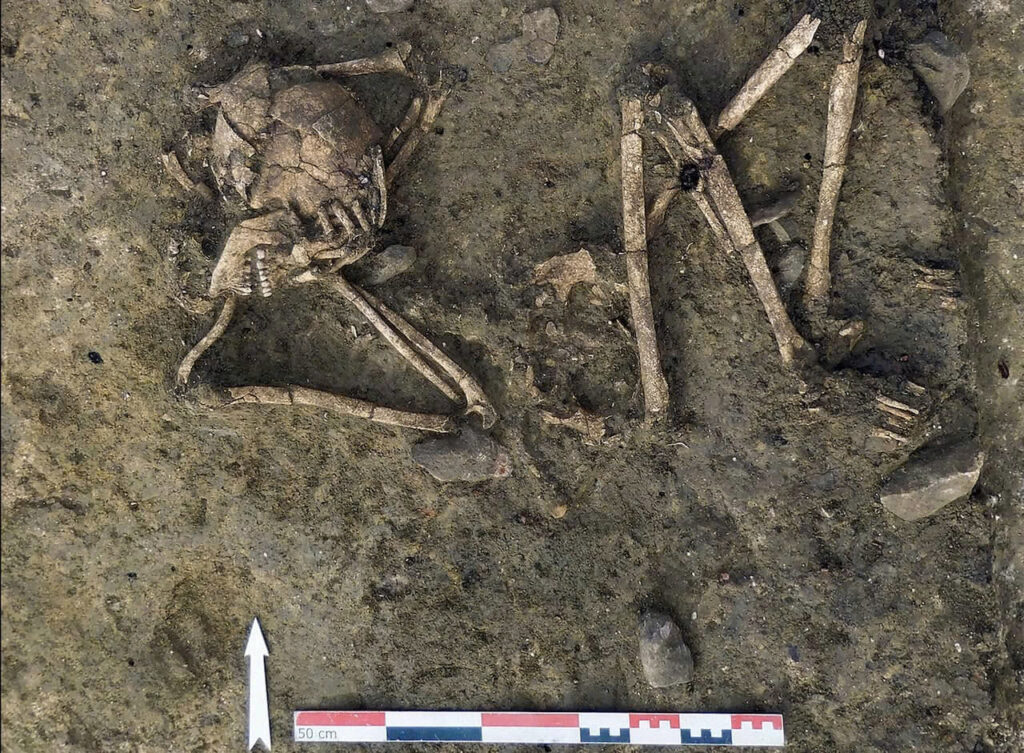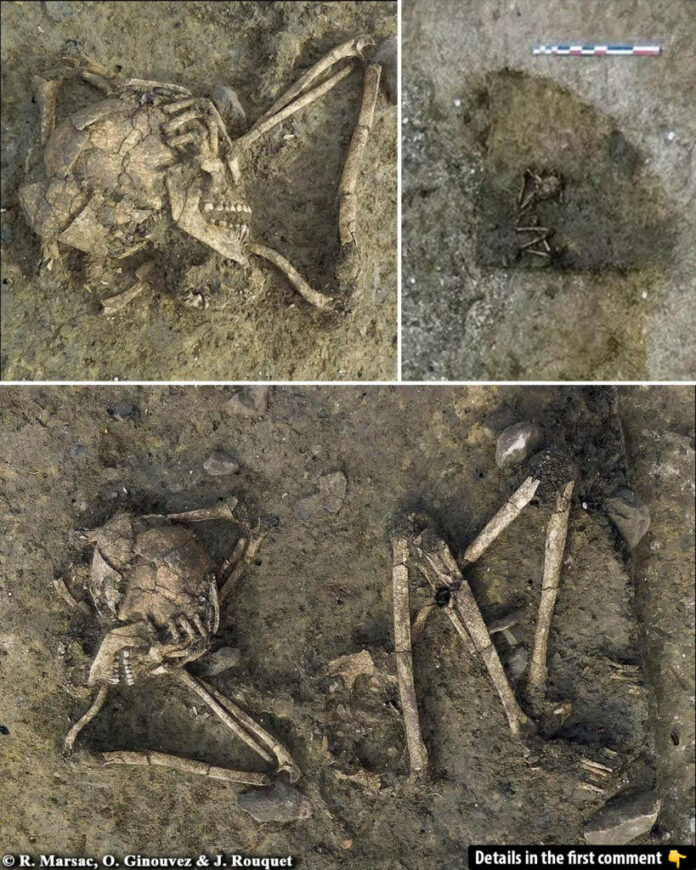The Remarkable Discovery

In the quiet town of Puisserguier, southern France, archaeologists made a startling discovery in 2017 that would challenge our understanding of Neolithic burial practices. Within a storage pit measuring 2.9 meters in diameter, they uncovered the remains of a woman dating back to the Chalcolithic period (2700-2600 BCE), belonging to the Verazien culture that once flourished in the Languedoc-Roussillon and Catalonia regions.
A Burial Like No Other

What made this discovery extraordinary wasn’t just its age, but the meticulous arrangement of the remains. The woman was found lying on her back, her limbs slightly bent to the left, and her arms crossed over her chest. Most intriguingly, her severed head was carefully placed upon her chest, supported by her right hand – a position that had remained undisturbed for over four millennia.
The Mystery Deepens
Through advanced archaeological techniques, including paleogenetic testing and pelvic morphology analysis, researchers confirmed the skeleton’s sex and precise dating. The completeness of the burial and the careful positioning of the remains suggested this was no accident or act of violence, but rather a deliberate ritual of great significance.
Challenging Traditional Interpretations
A Unique Case in Neolithic History
While decapitation and dismemberment have been documented at other European Neolithic sites, the Puisserguier burial stands apart. Unlike other cases where such practices often indicated violence or exclusion, this burial showed signs of reverence and care. The preservation of the connection between the skull, mandible, and hand suggests the arrangement was done shortly after death, pointing to a carefully planned ritual.
Cultural Significance

This discovery has led researchers to speculate about its deeper meaning within the Verazien culture. Rather than representing an act of violence or punishment, the burial arrangement might symbolize complex spiritual beliefs about life, death, and the role of the deceased in guiding the living.
Video
Looking to the Future
The Puisserguier burial continues to intrigue archaeologists and historians alike. While many questions remain unanswered, ongoing research using advanced technologies such as 3D modeling and isotopic analysis may reveal more about this woman’s life and the cultural practices of her time. The discovery serves as a fascinating window into the complex ritual practices of our Neolithic ancestors, reminding us that there is still much to learn about how ancient societies honored their dead.

This remarkable find not only challenges our preconceptions about Neolithic funeral practices but also highlights the sophisticated belief systems of prehistoric communities. As research continues, the Puisserguier burial may yet reveal more secrets about life and death in the ancient world.

